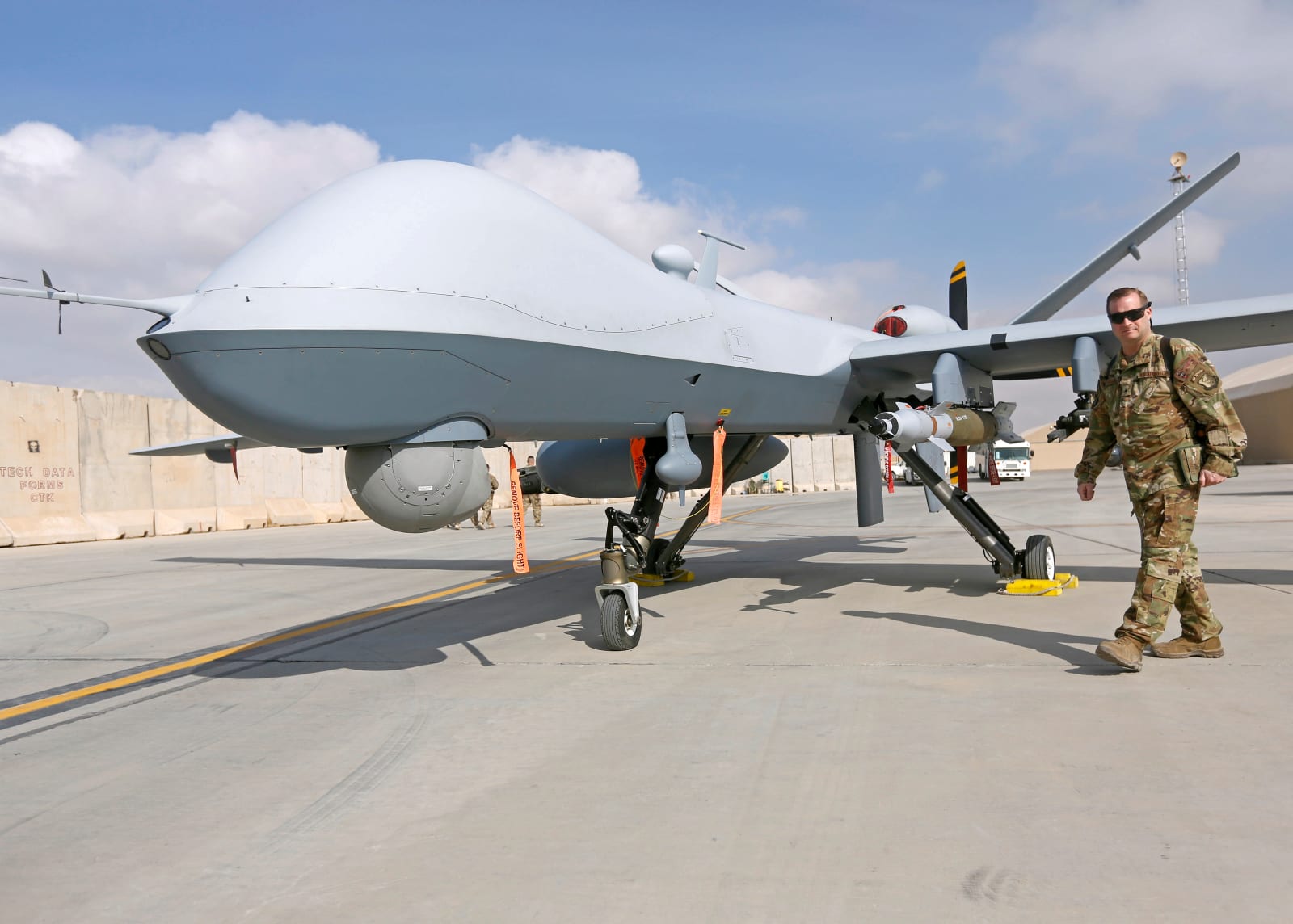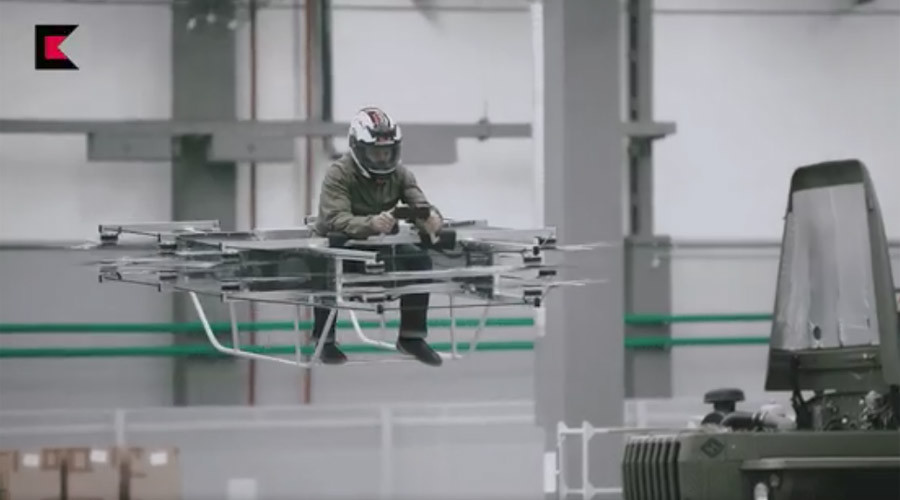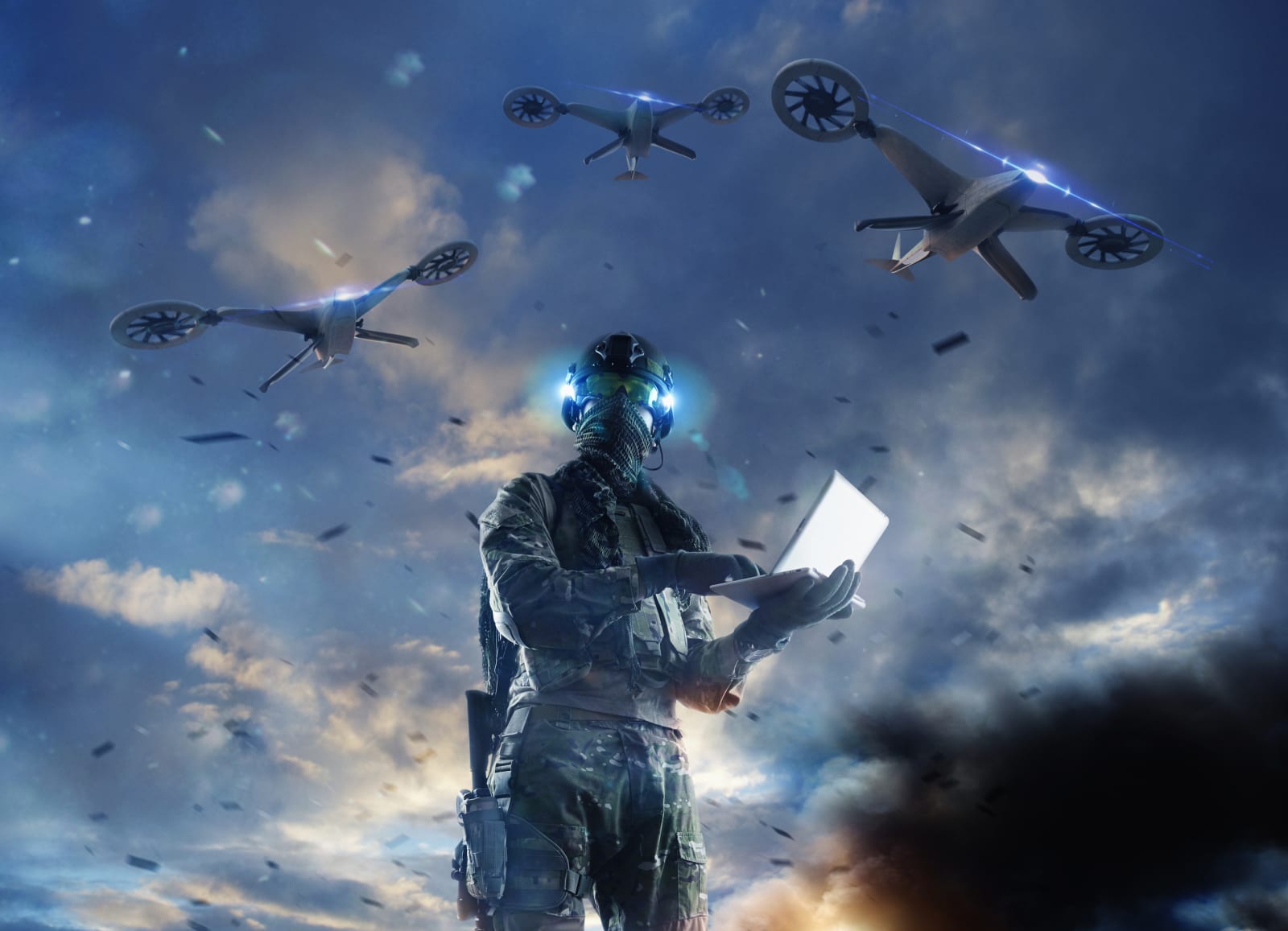
DARPA aids our military in myriad ways, from designing one shot, one kill weapons to creating robotic pack mules to carry soldiers' gear. It's also been building tools for soldiers to better survey their environment and identify threats, and its latest such tool is called the Cognitive Technology Threat Warning System (CT2WS). CT2WS is comprised of a 120-megapixel electro-optical video camera with a 120-degree field of view feeding a laptop running cognitive visual processing algorithms. Those algorithms identify potential targets in the video feed, which are shown to a soldier wearing an EEG cap that monitors brain signals. You see, the human brain is particularly good at perceiving threats, and CT2WS looks for the particular brain wave that occurs when we see one. The human component drastically improves the accuracy with which the system can identify enemies from afar. How accurate? Testing in desert, tropical and open terrain showed that without a solider/EEG filter, the system had 810 false alarms out of 2,304 threat events in an hour. Incorporating the filter resulted in only five false alarms per hour, plus it was able to identify 91 percent of the potential targets successfully. Not good enough, you say? Add commercial radar into the mix and the army becomes omniscient -- the system then identified 100 percent of the test targets.
Continue reading DARPA threat detection technology uses a camera to see targets, software and soldier brains to identify them
Filed under: Misc
DARPA threat detection technology uses a camera to see targets, software and soldier brains to identify them originally appeared on Engadget on Thu, 20 Sep 2012 13:30:00 EDT. Please see our terms for use of feeds.
Permalink  Extreme Tech
Extreme Tech | |
Email this |
Comments
 Last month, while tracking dark web marketplaces, threat intel team Insikt Group of the security firm Recorded Future discovered that someone was selling alleged US military documents. A hacker was asking for "$150 to $200" for non-classified yet sen...
Last month, while tracking dark web marketplaces, threat intel team Insikt Group of the security firm Recorded Future discovered that someone was selling alleged US military documents. A hacker was asking for "$150 to $200" for non-classified yet sen...
 Last month, while tracking dark web marketplaces, threat intel team Insikt Group of the security firm Recorded Future discovered that someone was selling alleged US military documents. A hacker was asking for "$150 to $200" for non-classified yet sen...
Last month, while tracking dark web marketplaces, threat intel team Insikt Group of the security firm Recorded Future discovered that someone was selling alleged US military documents. A hacker was asking for "$150 to $200" for non-classified yet sen...
 Last year, Hewlett Packard Enterprise (HPE) allowed a Russian defense agency to analyze the source code of a cybersecurity software used by the Pentagon, Reuters reports. The software, a product called ArcSight, is an important piece of cyber defense...
Last year, Hewlett Packard Enterprise (HPE) allowed a Russian defense agency to analyze the source code of a cybersecurity software used by the Pentagon, Reuters reports. The software, a product called ArcSight, is an important piece of cyber defense...
 Popular Mechanics reports that a Russian defense company has developed a flying vehicle that took to the air earlier this week as manufacturers demonstrated what it can do. The hovercraft, built by Kalashnikov Concern, gets its lift from 16 sets of r...
Popular Mechanics reports that a Russian defense company has developed a flying vehicle that took to the air earlier this week as manufacturers demonstrated what it can do. The hovercraft, built by Kalashnikov Concern, gets its lift from 16 sets of r...
 Thousands of files containing the private info of US military and intelligence personnel have been exposed online. The documents (which included a mixture of resumes and job applications) were found on a public Amazon Web Services server by cybersecu...
Thousands of files containing the private info of US military and intelligence personnel have been exposed online. The documents (which included a mixture of resumes and job applications) were found on a public Amazon Web Services server by cybersecu...
 Russia is going to great lengths to undermine the US military by not just spying on it, but trying to influence its members, according to a report from Politico. Operatives have been friending soldiers and veterans on social media, posting on popular...
Russia is going to great lengths to undermine the US military by not just spying on it, but trying to influence its members, according to a report from Politico. Operatives have been friending soldiers and veterans on social media, posting on popular...
 Urban areas continue to vex the US military as tall buildings and narrow streets keep impeding troop communications and tactics. While ground soldiers have used single drones for years, DARPA believes that a whole swarm could mitigate those disadvant...
Urban areas continue to vex the US military as tall buildings and narrow streets keep impeding troop communications and tactics. While ground soldiers have used single drones for years, DARPA believes that a whole swarm could mitigate those disadvant...
 Lawmakers want mandatory training for US military cybersecurity to act as the enemy in war games tailored to test the country's cyber defenses. The suggestion was included in a recent defense bill. To ensure attacks aren't confused with real (well, c...
Lawmakers want mandatory training for US military cybersecurity to act as the enemy in war games tailored to test the country's cyber defenses. The suggestion was included in a recent defense bill. To ensure attacks aren't confused with real (well, c...
 Electronic warfare (EW) techniques -- from killing missiles with microwaves to downing drones with radio interference -- have become an integral part of modern wars. This issue is exasperated by the fact that both sides in a conflict must also compet...
Electronic warfare (EW) techniques -- from killing missiles with microwaves to downing drones with radio interference -- have become an integral part of modern wars. This issue is exasperated by the fact that both sides in a conflict must also compet...


